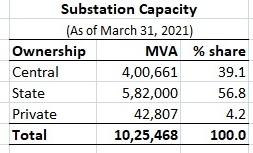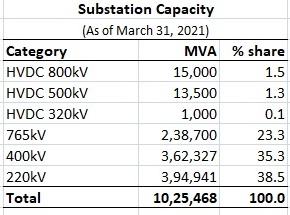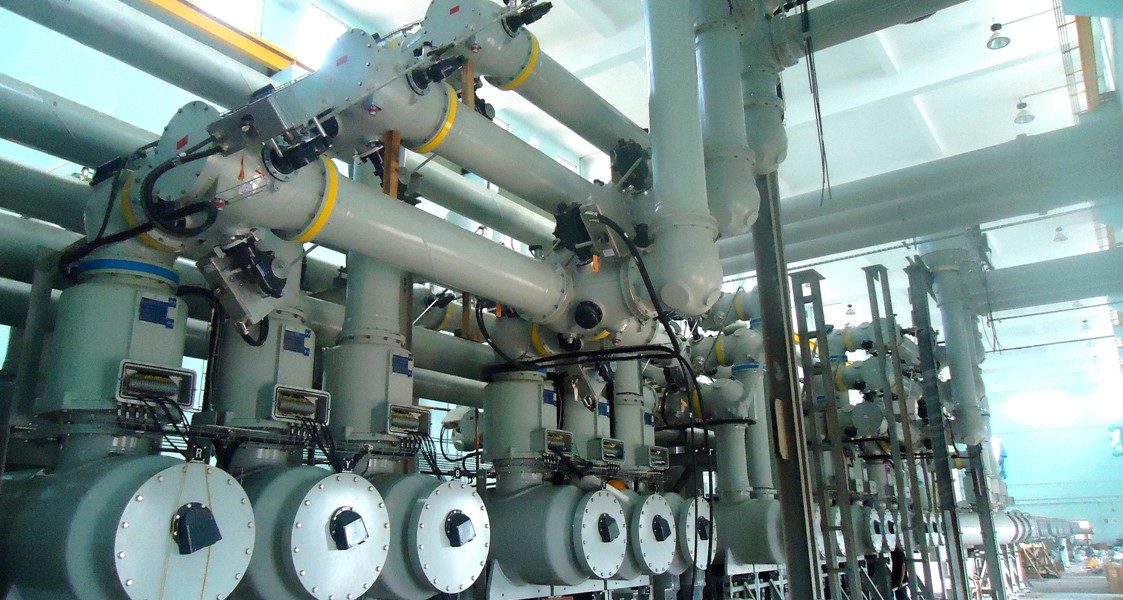India’s addition of transformation capacity, through substations of 220kV or more, was 16 per cent lower year-on-year in FY21.
According to latest statistics released very recently by Central Electricity Authority (CEA), India added 57,575 MVA of transformation capacity in FY21. This is measured through substations of rating 220kV or more. Compared with the 68,230 MVA added in FY20, the achievement in FY21 was 16 per cent lower.
Further, in both years, the addition fell short of the planned target. In FY20, the target achievement was 83.4 per cent, improving somewhat to 91.3 per cent in FY21.
1-million MVA mark
 An achievement of sorts was made in FY21 with India’s total transformation capacity cross the 1-million MVA mark. As of March 31, 2021, India’s aggregate transformation capacity reached 10,25,468 MVA, up 6 per cent from 967,893 MVA as of the same date in 2020. State government entities accounted for 57 per cent of the total transformation capacity as of March 31, 2021, followed by Central government utilities with 39 per cent.
An achievement of sorts was made in FY21 with India’s total transformation capacity cross the 1-million MVA mark. As of March 31, 2021, India’s aggregate transformation capacity reached 10,25,468 MVA, up 6 per cent from 967,893 MVA as of the same date in 2020. State government entities accounted for 57 per cent of the total transformation capacity as of March 31, 2021, followed by Central government utilities with 39 per cent.
HVDC Substations
 Of the total 57,575 MVA added in FY21, a total of 4,000 MVA, or nearly 7 per cent, came from HVDC substations. Much of this capacity was associated with the 800kV Raigarh-Pugalur HVDC link, major portions of which were commissioned in FY21.
Of the total 57,575 MVA added in FY21, a total of 4,000 MVA, or nearly 7 per cent, came from HVDC substations. Much of this capacity was associated with the 800kV Raigarh-Pugalur HVDC link, major portions of which were commissioned in FY21.
As of March 31, 2021, HVDC substations had a share of 2.9 per cent in India’s total transformation capacity. As of March 31, 2020, this share was slightly lower at 2.6 per cent. This HVDC capacity includes all voltage classes—800kV, 500kV and 320kV.
It is also interesting to observe that FY21 saw the emergence of a new HVDC voltage class—320kV. This came about by the VSC-based HVDC station associated with the Pugalur-Trichur extension of the 800kV Raigarh-Pugalur HVDC line. (Read more)
The 765kV class
As discussed in an earlier separate study by T&D India, India fared poorly with respect to addition of 765kV transmission lines. With the result, 765kV-based transformation capacity also suffered. The country could add barely 7.700 MVA of transformation capacity based on 765kV substations. All of this was accomplished by Power Grid Corporation of India (PGCIL). It may be recalled that no interregional transmission lines, based on the tariff-based bidding mechanism (TBCB), were awarded in FY21. This would have been an important avenue for 765kV lines and substations.
State government utilities had planned to add 6,000 MVA of capacity through 765kV substations in FY21. However, the year ended with nil achievement.
400kV commands over 40pc share
Nearly 43 per cent of the total substation capacity added in FY21 was from 400kV substations. As of March 31, 2021, this voltage class had a share of 35.3 per cent in India’s total transformation capacity. This share has by and large remained steady over the past decade.
State government adds most in FY21
State government transmission utilities accounted for 56 per cent of the aggregate 57,575 MVA added in FY21. Much of this was through 220kV substations. Central utilities, mainly PGCIL, had a corresponding share of 37 per cent, much of this coming from 400kV and HVDC substations. The private sector couldn’t do better than accounting for just 7 per cent of the total transformation capacity added in FY21
(Featured photograph showing a GIS substation by GE is for illustration only)



